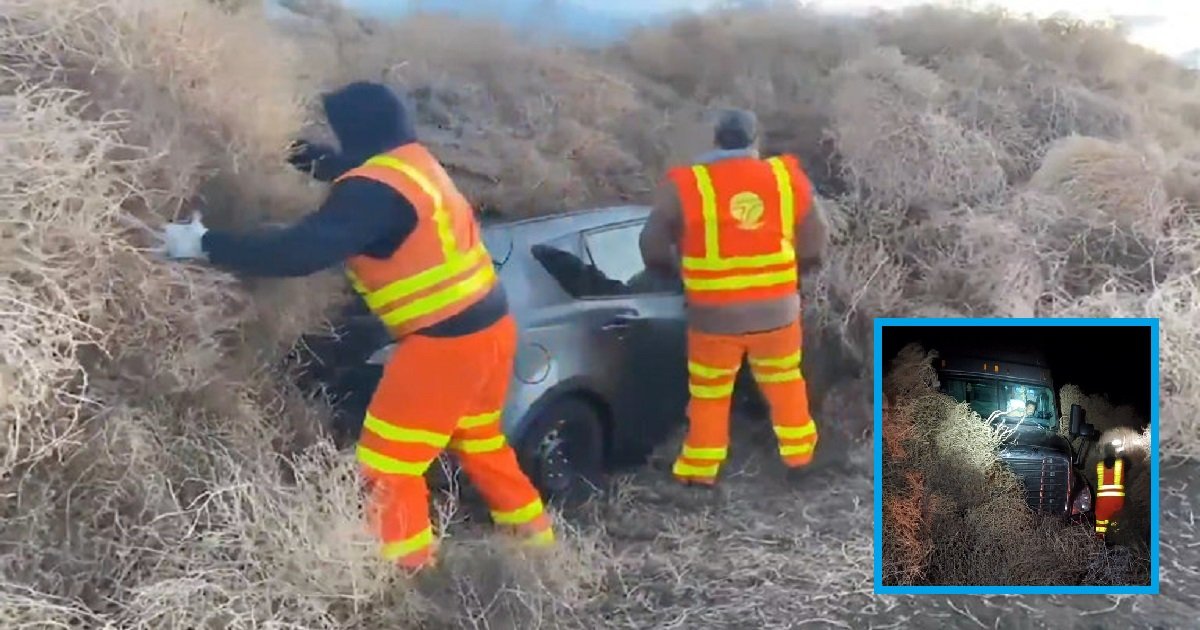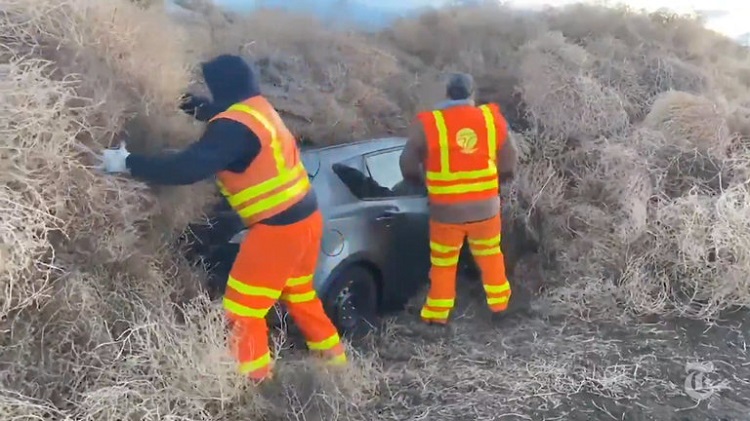A western or gunslinger movie isn’t complete without a ghost town and the requisite tumbleweeds rolling across the forlorn landscape.
But on New Year’s Eve, the sight of tumbleweeds along a Washington state highway looked like something along the lines of a sci-fi horror flick than that of the American West.
Watch to learn more about the situation below!
[rumble video_id=v60q2h domain_id=u7nb2]
Video credit: Rumble
State Route 240 in Washington saw a stretch of highway three football fields long turn into a virtual flood of tumbleweeds, some of them 30 feet high, that entombed cars and trucks for several hours. The event led astonished authorities to call it “Tumblegeddon.”
Stranded drivers started making 911 calls around 6:30 p.m. on December 31 on a stretch of highway near Richland, about 200 miles southeast of Seattle in a more arid part of the state.
Trooper Chris Thorson of the Washington State Patrol said, “The accumulation was beyond belief. I’ve worked here in southeastern Washington State for over 20 years. We always experience high winds and tumbleweeds rolling down the road, but I’ve never seen an accumulation like this before.”
Washington State Department of Transportation crews had to use both snowplows and their hands to clear out the tumbleweeds. About 20 miles of highway had to be closed so that crews could work on clearing the road.
In all, it took 10 hours to clear the tumbleweeds, said, Thorson. A few drivers were stuck in their vehicles until midnight.
“If you can imagine that way to ring in the New Year,” Mr. Thorson said.
Because the tumbleweed storm occurred on a stretch of highway near the Hanford Nuclear Reservation, known for its part in the Manhattan Project, “Some people are calling them nuclear tumbleweeds,” Mr. Thorson said.
But according to David Mosley, a spokesman for Washington’s Department of Transportation, the area has a desert climate and has been known for its tumbleweeds and whipping dust.
“We’ve had issues in the past but we’ve never seen them come this quick,” he said. “We’re talking a real quick overnight stacking.”
Occurrences such as the one in Washington state usually happen when a dense patch of tumbleweeds ripen and then high winds cause them to break off at the same time, said Jeffrey Dukes, a professor of forestry and natural resources at Purdue University.
“It’s unusual when something like this happens, but we do hear stories like this from time to time,” he said.
Once the tumbleweeds started rolling down the 40-foot berms, drivers decided to pull over because it was getting hard to see. Thorson said that it was a smart move but ironically, the stopped cars also provided a barrier that prevented the tumbleweeds from rolling into the desert and they continued to pile up.
Thorson said that one car was even buried for eight hours.
“Luckily, no one was in it,” he said.
Replaced!




